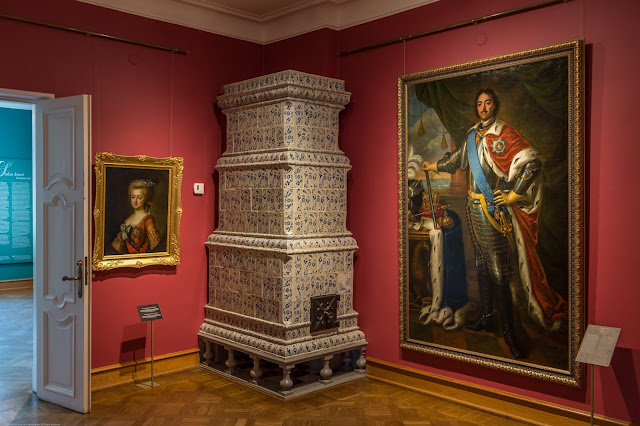About the Museum
The Kadriorg Art Museum introduces, preserves and collects early foreign art – primarily western European and Russian paintings, graphic arts, sculpture and applied arts. The museum is located in Kadriorg Park in Tallinn, in a Baroque palace built by Tsar Peter the Great of Russia as a summer residence.
The Kadriorg Art Museum is the only museum in Estonia devoted to foreign art. Estonia’s largest collection of western European and Russian art (about 9,000 works of art from the 16th to 20th centuries) is located here. The Mikkel Museum houses the collection of paintings, graphic arts and porcelain donated to the museum by the private collector Johannes Mikkel (1907–2006).
The Kadriorg Art Museum has an extensive permanent exhibition, which displays the best of its foreign art collection. In addition, there are revolving exhibitions that deal with early European art and its history. The objectives of the Kadriorg Art Museum and its exhibition activities are to introduce the world’s art legacy and the creation of local collections in an international context, as well as to mediate ways of viewing and interpreting early art. Along with exhibitions, the museum’s publications and spring conferences also deal with topical issues of art history.
As a competence centre for early art and art history, the Kadriorg Museum has a wide network of international contacts with European museums, restoration centres and scientific institutions. Continuous cooperation also occurs with Estonia’s schools of higher education – many of the museum employees are also faculty members. Seminars, lectures, practical training for students and exhibition presentations are also carried out at the museum.
The Education Centre of the Kadriorg Art Museum is called the Palace School and fosters the continuance of European art traditions in Estonia. Every year, more than 1,200 tours at various levels and on various subjects are conducted by the Palace School. The programmes also include hundreds of museum classes for children, dozens of programmes for children and young adults related to the revolving exhibitions, and Saturday Academy lectures. The family events at the Palace School include the Palace Garden Games, Great Painting Saturdays and Late Wednesdays series. Museum guide training and birthday programmes for the old and the young also take place under the auspices of the Palace School.
Palace and Its story
The constraction of the Kadriorg Palace was started by the Tsar Peter the Great of Russia in 1718. It was named Kadriorg (in German Catharinenthal) in honour of his wife Catherine I. The palace was designed by the Italian architect Nicola Michetti and its abundantly decorated main hall is one of the most exquisite examples of baroque architecture both in Estonia and in northern Europe.
Kadriorg Palace has always been the crown jewel of Tallinn. The small festive tsars’ palace in the style of Roman Baroque, surrounded by a regular garden, with fountains, hedges and flowerbeds, planned after the model of Versailles, was erected on the shore of the Gulf of Finland, according to the wishes of the Russian ruler Peter I.
Most of the Russian rulers visited the imperial summer residence. Great changes in the life and in the interior of the palace occurred in the fi rst half of the 19th century, when Tallinn, which had become a fashionable holiday resort, was often visited by Nicholas I and his family. The palace served as the main building of the Art Museum of Estonia in the 1920s, and again in 1946–1991. In the 1930s, it was the residence of the Head of State of the Estonian Republic. During that period, extensions to palace were added – the banquet hall and orangery; many rooms were redecorated.
https://www.visittallinn.ee/eng/visitor/see-do/sightseeing/pid-174728/kadriorg-palace-kadriorg-art-museum
https://www.visittallinn.ee/eng/visitor/see-do/sightseeing/pid-174728/kadriorg-palace-kadriorg-art-museum




























































No comments:
Post a Comment